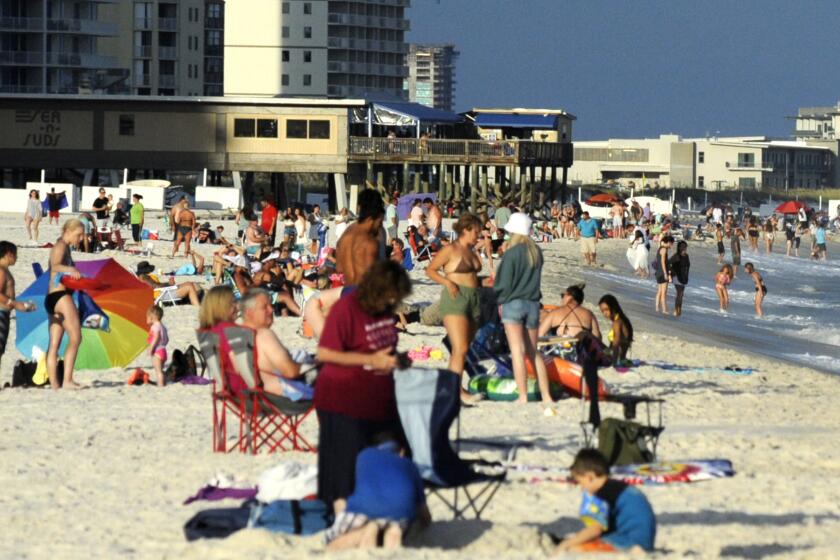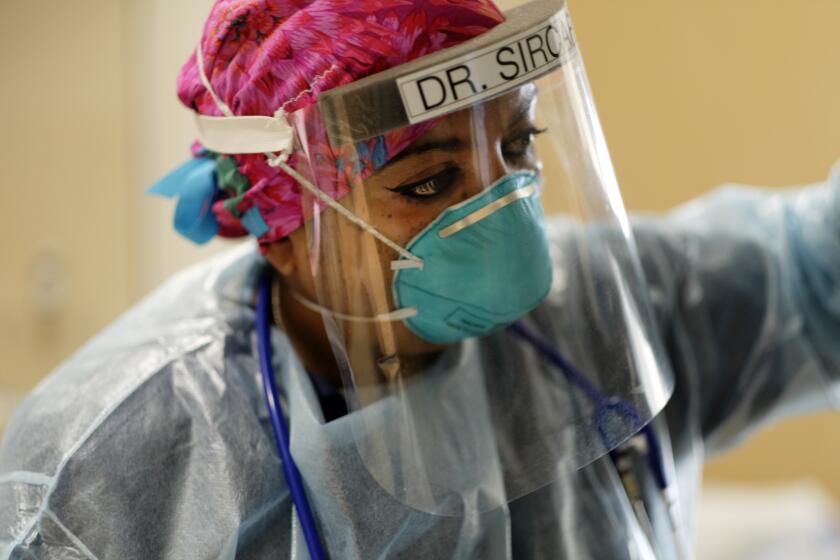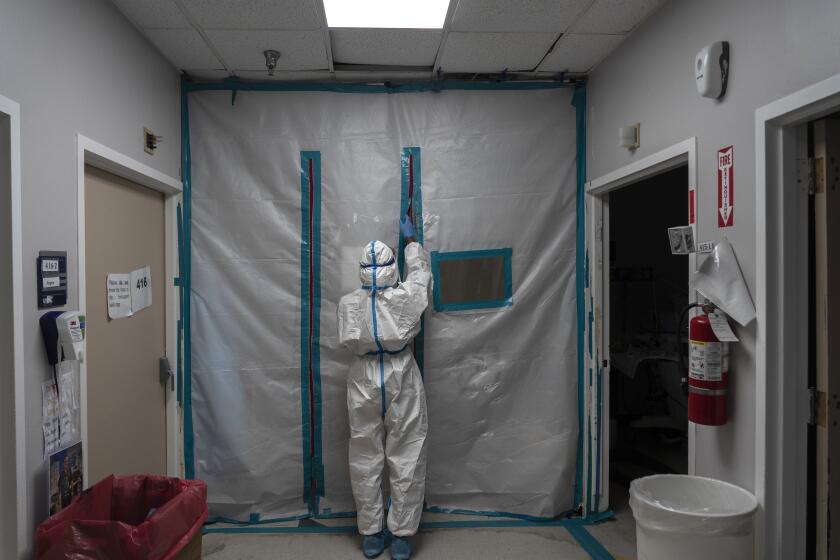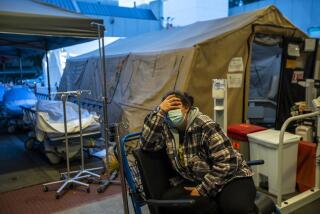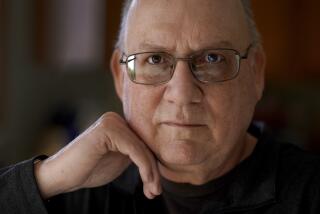With no more beds, hospitals are shipping their COVID-19 patients to far-off cities
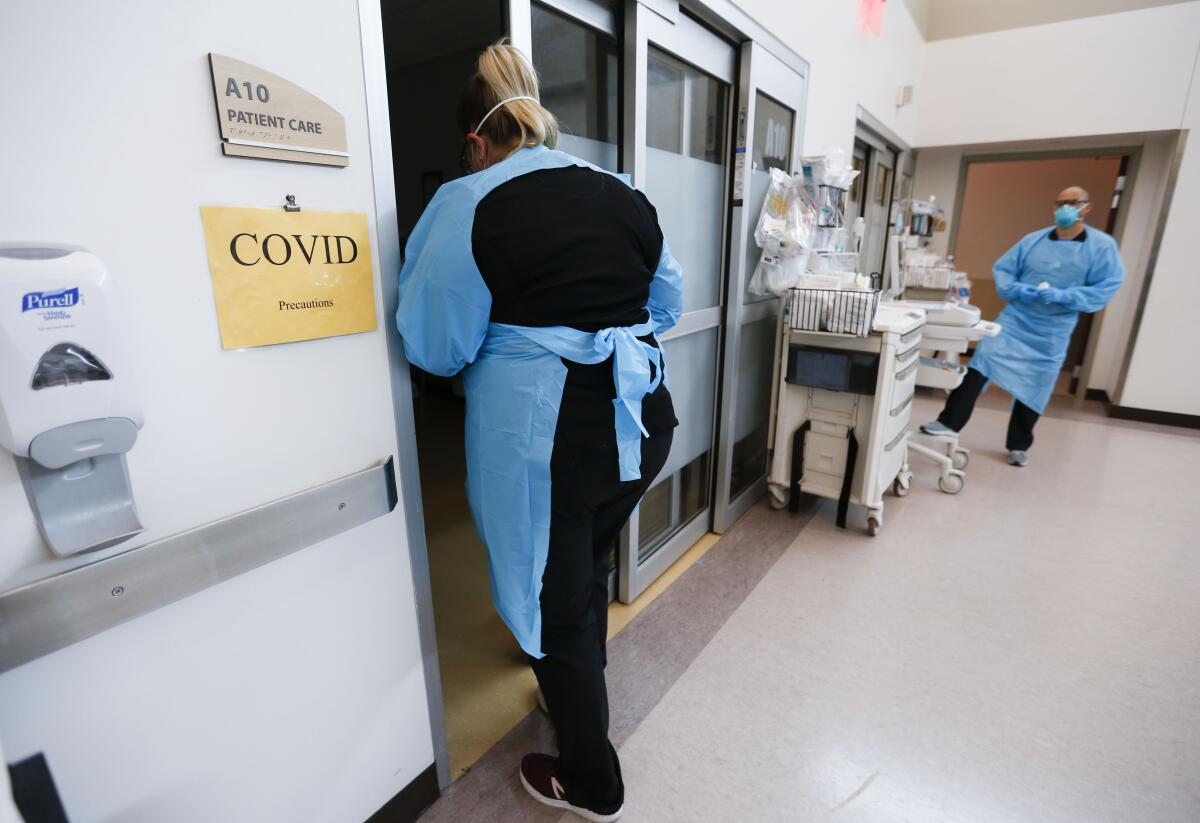
- Share via
MISSION, Kan. — Many overwhelmed hospitals, with no beds to offer, are putting critically ill COVID-19 patients on planes, helicopters and ambulances and sending them hundreds of miles away to far-flung states for treatment.
The surge in the Delta variant of the coronavirus, combined with low vaccination rates, has pushed hospitals to the brink in many states and resulted in a desperate scramble to find beds for patients.
Large hospitals in urban areas already were running short of space and staff when the summer COVID-19 surge started because of other procedures like cancer biopsies and hip replacements. That means there have very few free beds to offer to patients from small rural hospitals without intensive care units or from medical centers in coronavirus hot spots.
“Just imagine not having the support of your family near, to have that kind of anxiety if you have someone grow acutely ill,” said Steve Edwards, chief executive of CoxHealth, whose hospital in Springfield, Mo., is treating patients from as far away as Alabama.
Hospitals across the U.S. had more than 75,000 COVID-19 patients as of last week, a dramatic increase from a few weeks ago but still well below the winter surge records. However, Florida, Arkansas, Oregon, Hawaii, Louisiana and Mississippi all have set pandemic records for COVID-19 hospitalizations in recent weeks.
Unlike the winter surge, hospitals this summer were already strained because emergency room volumes are back to pre-pandemic levels and patients are catching up on care they put off.
The U.S. Gulf Coast is glowing like a bad sunburn on maps that show COVID-19 trouble spots in red.
“We are seeing COVID patients and we are seeing car accidents and we are seeing kids come in with normal seasonal viral infections. And we are seeing normal life come into the emergency department along with the extra surge of COVID patients, so it is causing that crisis,” said Dr. Mark Rosenberg, president of the American College of Emergency Physicians.
In Arizona, a special COVID-19 hotline is getting desperate calls from hospitals in Wyoming, Arkansas, Texas and California that are in search of bed space. Often, there are no takers.
“We just can’t get them out,” lamented Dennis Shelby, chief executive of the 15-bed Wilson Medical Center in Neodesha, Kan. Officials at the small hospital recently called 40 other facilities in multiple states seeking a bed for a COVID-19 patient before finally finding one more than a day later about 220 miles away. Six of its seven patients have COVID-19, a pandemic high.
Lambda is worth watching because of its massive spread in South America, but health officials don’t know whether it will supplant Delta.
In Kansas, sick COVID-19 patients at small rural hospitals are waiting an average of nearly 10 hours to be flown somewhere else, according to Motient, a company contracting with the state to help manage transfers.
Dr. Richard Watson, founder of Motient, said Kansas patients were being sent as far away as Wisconsin, Illinois, Colorado and Texas. Often, though, the rural hospitals just muddle through.
“That is just the worst day that you can have in the emergency room as a provider, to be taking care of a patient that you are totally helpless to give them what you know they need,” he said.
He said the delayed transfers can have dire consequences for patients, especially those who urgently need to see specialists, often available only in bigger hospitals.
Gov. Greg Abbott directs agencies to find additional medical staff and he requests that hospitals postpone elective procedures as the Delta variant overwhelms hospitals statewide. But his ban on mask mandates remains in place.
“Imagine being with your grandma in the ER who is having a heart attack in western Kansas and you are saying, ‘Why can’t we find a bed for her?’ We are watching this happen right in front of us.”
In Washington state, the 25-bed Prosser Memorial Hospital doesn’t have an intensive care unit, so it often sends critically ill patients elsewhere in the state. Hospital spokeswoman Shannon Hitchcock said Washington hospitals are full, so Prosser patients are being sent as far as eastern Idaho — 600 miles away.
Luke Smith, director of the Arizona Surge Line, which coordinates COVID-19 patient transfers for Arizona patients and offers advice to out-of-state hospitals, said people arriving at emergency rooms “are more acutely ill than we have seen historically.”
Finding a hospital to take them is made more difficult by staffing shortages, after pandemic-fatigued doctors and nurses walked away.
“Most of them are saying it isn’t that they don’t have an open bed, it is that they don’t have nursing staff to care for them,” said Robin Allaman, chief nursing officer at the 25-bed Kearny County Hospital in tiny Lakin, Kan. Officials there called hospitals in Nebraska, Oklahoma and New Mexico before one in Colorado Springs, Colo., 200 miles away, agreed to take a recent patient.
Allaman has no idea how many calls they made. “I think we quit counting,” she said.
High vaccination rates among the 65-plus age group that filled beds early in the pandemic were supposed to protect hospitals from becoming overwhelmed again. But Justin Lessler, a professor of epidemiology at Johns Hopkins University, said there hasn’t been the reduction in hospitalizations that officials had hoped for because the Delta variant seems to be more severe, particularly in younger age groups, whose vaccination rates are lower.
University of Iowa Healthcare in Iowa City has been getting calls from out-of-state hospitals seeking transfers, said Dr. Theresa Brennan, the hospital’s chief medical officer. The hospital turns down most of them “because we have beds full of our Iowans.”
Des Moines emergency medicine specialist Dr. Clint Hawthorne, like many doctors in Iowa, is concerned the situation could get worse after the Iowa State Fair, which is expected to draw 1 million people.
“How are we going to be able to handle that?” Hawthorne said. “There’s not a good answer to that.”
More to Read
Sign up for Essential California
The most important California stories and recommendations in your inbox every morning.
You may occasionally receive promotional content from the Los Angeles Times.
